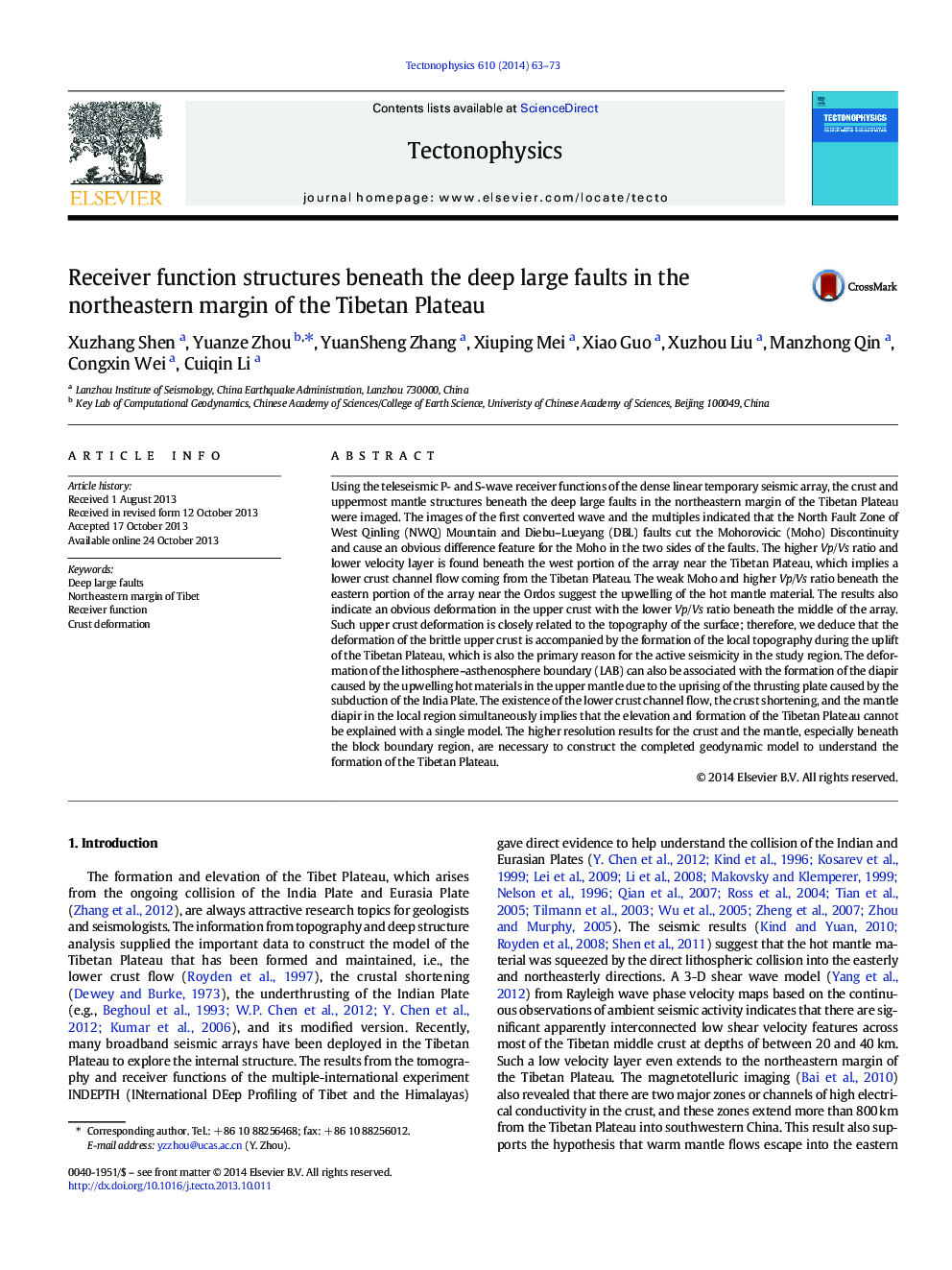| کد مقاله | کد نشریه | سال انتشار | مقاله انگلیسی | نسخه تمام متن |
|---|---|---|---|---|
| 4692058 | 1636777 | 2014 | 11 صفحه PDF | دانلود رایگان |
• The structures beneath the deep-large faults in the NE Tibet were imaged.
• The deep-large faults should cut the Moho.
• The complex structures imply complicated formation of the Tibet.
Using the teleseismic P- and S-wave receiver functions of the dense linear temporary seismic array, the crust and uppermost mantle structures beneath the deep large faults in the northeastern margin of the Tibetan Plateau were imaged. The images of the first converted wave and the multiples indicated that the North Fault Zone of West Qinling (NWQ) Mountain and Diebu–Lueyang (DBL) faults cut the Mohorovicic (Moho) Discontinuity and cause an obvious difference feature for the Moho in the two sides of the faults. The higher Vp/Vs ratio and lower velocity layer is found beneath the west portion of the array near the Tibetan Plateau, which implies a lower crust channel flow coming from the Tibetan Plateau. The weak Moho and higher Vp/Vs ratio beneath the eastern portion of the array near the Ordos suggest the upwelling of the hot mantle material. The results also indicate an obvious deformation in the upper crust with the lower Vp/Vs ratio beneath the middle of the array. Such upper crust deformation is closely related to the topography of the surface; therefore, we deduce that the deformation of the brittle upper crust is accompanied by the formation of the local topography during the uplift of the Tibetan Plateau, which is also the primary reason for the active seismicity in the study region. The deformation of the lithosphere–asthenosphere boundary (LAB) can also be associated with the formation of the diapir caused by the upwelling hot materials in the upper mantle due to the uprising of the thrusting plate caused by the subduction of the India Plate. The existence of the lower crust channel flow, the crust shortening, and the mantle diapir in the local region simultaneously implies that the elevation and formation of the Tibetan Plateau cannot be explained with a single model. The higher resolution results for the crust and the mantle, especially beneath the block boundary region, are necessary to construct the completed geodynamic model to understand the formation of the Tibetan Plateau.
Journal: Tectonophysics - Volume 610, 6 January 2014, Pages 63–73
